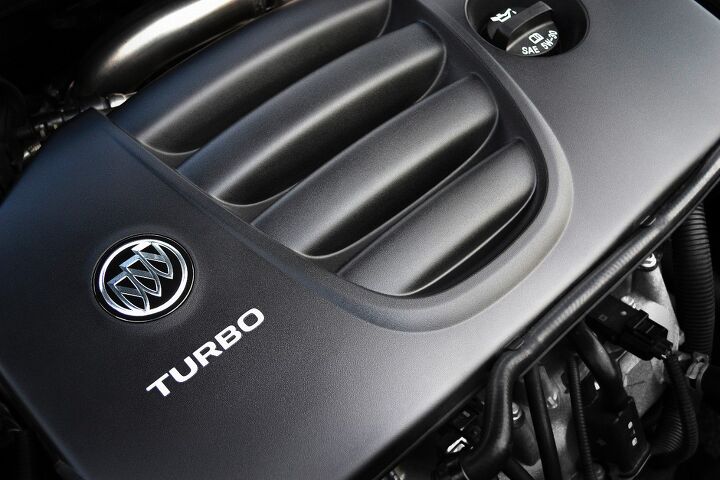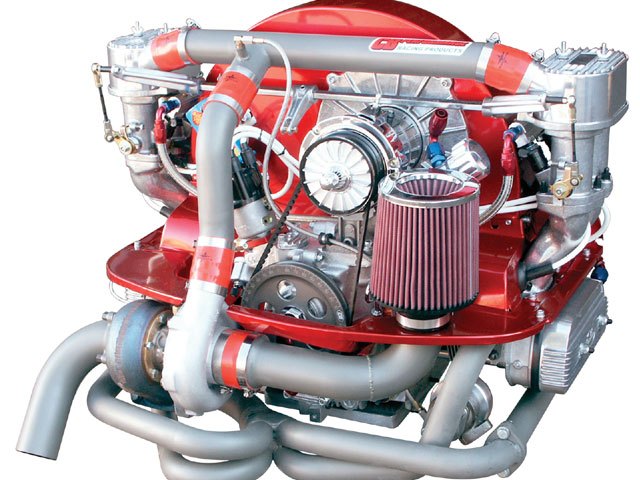#turbochargers
General Motors to Turbocharge Its Engine Offerings for 2018, Literally
Rising emissions regulations are forcing many automakers to adopt forced induction across the board. While some, like Mazda and Honda, have been milking naturally aspirated engines for all their worth, even they have turned to turbochargers to do some of the heavy lifting. General Motors has more than doubled North American sales of vehicles with turbo motors — going from roughly 288,000 units in 2011 to 712,000 in 2016, 23 percent of its total volume.
GM’s powertrain lineup has changed dramatically. A decade ago, only a handful of its models came with a turbo option, while just under half of today’s fleet uses some form of forced induction. The trend is set to continue for the 2018 model year, boosting the carmaker’s share of turbocharged offerings above the 50 percent mark.
Ford Crowns Itself V6 Torque King, Debuts Next-Generation EcoBoost Engine
Ford Motor Company didn’t want an opportunity to claim bragging rights to pass by, so it sent its 3.5-liter EcoBoost engine in for a massage.
The result was a torque (eco)boost of 30 pounds-feet, raising the engine’s output to 365 horsepower and 450 lb-ft. That places Ford’s F-150 ahead of its closest full-size six-cylinder competitor, the Ram 1500 EcoDiesel, which claims 420 lb-ft.
TTAC News Round-up: Volkswagen Has A Better Slogan and Attitude, BMW Has Less Money, And Honda's Bringing All The Turbos
Volkswagen’s simple, effective and direct slogan “Das Auto” ist kaput after about a decade of ruining our logic and grammar.
That, and BMW gets spanked by NHTSA, drive like it’s 2008, and more … after the break.
It's All Turbos From Here: 2017 Porsche 911 Comes Boosted Out of The Box
Porsche announced on Sunday that when its new 2017 Porsche 911 Carrera and Carrera S go on sale in March 2016 they’ll be force-fed air through twin turbochargers — and not naturally aspirated like nature intended.
Instead of a 3.6-liter flat-six behind its rear wheels, the new 911 Carrera and Carrera S will sport a twin-turbocharged, 3-liter, flat-six engine. (Porsche didn’t directly specify in its statement the engine’s number of cylinders, so if you want to play a fun game today, read how some outlets have written around it.)
As our own Tim Cain points out, the output of the new turbocharged Carrera and Carrera S, which is 370 horsepower and 420 horsepower respectively, is shockingly close to the 415 horsepower produced by the 996 Turbo from 2000.
Unsurprisingly, Porsche boosted the price too — a new Carrera will run $89,400 before delivery and options, which is more than $5,000 dearer than the current generation.
Audi Confirms Turbos in Future Editions of R8
Future engines in entry-level Audi R8s will be inevitably turbocharged, Audi executives told Motoring (via Car and Driver).
Instead of replacing the 5.2-liter V10s found in the 2017 R8 standard and Plus models, the boosted V6 from the upcoming RS4 (or maybe a turbo five cylinder?) would slot below the naturally aspirated models.
“It is inevitable that we will go to a turbocharged motor for it at some point. It would be in this model cycle, to give us a fuller range,” Ulrich Hackenberg, who sits on Audi’s Board of Management as a technical director, told Motoring last month.
Natural Aspiration Expiration At VW, Will Go All Turbo Within Four Years, Ford May Too
According to a high ranking Volkswagen executive, within four years conventional naturally aspirated gasoline engines will be extinct at the automaker, replaced with diesel powerplants and turbocharged gasoline engines. Mark Trahan, VW of America’s executive vice president for group quality, said that the few conventional naturally aspirated engines the company sells will eventually be replaced with forced induction engines. “You have to have a turbo these days,” Trahan told The Detroit News. “We only have one normally aspirated gas engine, and when we go to the next generation vehicle that it’s in, it will be replaced. So three, four years maximum.”
Honeywell Calls U.S. Emerging Market. For Turbochargers
How do you goose fuel economy? Lower the cubic inches. Then add a little blow. Honeywell hopes that usage of turbochargers will double in new U.S. automobiles by 2015, “as tighter fuel economy standards foster an emerging market,” writes Bloomberg. The U.S. has among the lowest turbo use in the world, making it an “emerging region from a turbo standpoint,” Alex Ismail, head of Honeywell’s transportation systems division, said.





















Recent Comments